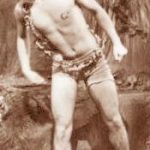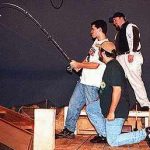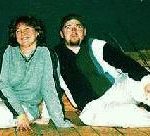Fall Production
A Midsummer Night’s Dream
by William Shakespeare
directed by A. Glen Gourley
October 21-24, 1998
Fine Arts Theatre
Hyman Fine Arts Center
Francis Marion University
THE STORY:
A Midsummer Night’s Dream is a comedy play by William Shakespeare, believed to have been written between 1590 and 1596. It portrays the events surrounding the marriage of the Duke of Athens, Theseus, and Hippolyta. These include the adventures of four young Athenian lovers and a group of six amateur actors (mechanical), who are controlled and manipulated by the fairies who inhabit the forest in which most of the play is set. The play is one of Shakespeare’s most popular works for the stage and is widely performed across the world.
THE CAST:
Theseus: Garrett Messick
Hippolyta: Darlene Granada
Egeus: Will Franklin
Hermia: Rachael Jebaily
Lysander: Jared Ackerman
Demetrius: Jason Abernathy
Helena: Kate Corea
Quince: Jacob Robertson
Bottom: Kendall Kiker
Snug: Rob Jones
Flute: Stephen Spratt
Snout: Greg Williams
Starveling: Brad Linton
Peaseblossom: Christine Hong
Puck: David Martinez
Oberon: Ramone Dickerson
Titania: Brantley Graham
Cobweb: Holly Creel
Moth: Terri Timmons
Mustard Seed: Amanda Cudworth
Lullaby: Marcia Kunkel
Court Attendants:
Tenieka Brown
Felicia Coker
Jane Lewis
Colleen Thorndike
Attendant Faeries to Titania:
Dawn Alex
Dawn Barfield
Attendant Faeries to Oberon:
Greg Anderson
Andy Matthews
Brent Ard
Patrick Smith
Vernon Fowler II
Matthew Vance
Direction is by Assistant Professor of Theatre A. Glen Gourley. Scene design is by Associate Professor David C. Granath, costume design is by Assistant Professor Amy Sherwood.
Winter Production
Catfish Moon
by Laddy Sartin
directed by David Granath
February 24-27, 1999
Fine Arts Theatre
Hyman Fine Arts Center
Francis Marion University
THE STORY:
Laddy Sartin, a Rock Hill, SC resident, sets his play at an old fishing pier out on Cypress Lake when it has just fallen under the magic of another “catfish moon.” This pier was the hangout for three best friends when they were kids — skipping school, skinny dipping or just fishing. Now Curley, Gordon and Frog (played by Jacob Robertson, Kendall Kiker and Jason Abernathy) are older and have tasted the bitterness of life as well as the sweetness.
The pressures and problems that come with middle age have eroded the closeness between Frog and Gordon. The final straw comes when Frog discovers that Gordon is dating his ex-wife Betty (played by Marcia Kunkel). Curley, the “big brother” of the group, convinces Frog and Gordon to go on an overnight fishing trip like old times in an attempt to recapture the friendship and settle all disputes.
On the pier, once the weight of adulthood has been lifted by laughter and love of fishing, the three guys discover that their friendship was never really lost. However, in the midst of catching the “biggest fish” of all time, life brings them back to a painful reality. The poignant resolution of the play brings Gordon and Frog to the realization that life is too precious and too short to let true friendship “get away.”
The cast includes Jacob Robertson (Warrenville, SC) as Curley, the “leader” of the group. Kendall Kiker (Darlington, SC) will be seen as Gordon, a “big Teddy bear” kind of guy, with Jason Abernathy (Columbia, SC) playing Frog, a sometime too “quick-tempered” third member of the old gang. Additionally, Marcia Kunkel (Ellicott City, MD) will be seen as Curley’s “little sister” / Frog’s ex-wife / Gordon’s new sweetheart. This is indeed an interesting mix of friends.
The play is under the direction of associate professor David C. Granath. Scenic design is provided by assistant professor D. Keith Best, costume design by assistant professor Amy L. Sherwood, with Granath designing lighting.
Catfish Moon was first produced by the Charlotte Repertory Theatre in 1996 and was described by The Charlotte Observer as “full of the most bodacious joviality” with an “ending that is pure delight.” Sartin, a native of Mississippi who currently resides in Rock Hill, SC has created a tale of life’s ups and downs, of love and loss within lifelong friendships.
Spring Production
Cat on a Hot Tin Roof
by Tennessee Williams
directed by A. Glen Gourley
April 14-17, 1999
Fine Arts Theatre
Hyman Fine Arts Center
Francis Marion University
THE STORY:
Cat on a Hot Tin Roof first heated up Broadway in 1955 with its gothic American story of brothers vying for their dying father’s inheritance amid a whirlwind of sexuality, untethered in the person of Maggie the Cat. The play also daringly showcased the burden of sexuality repressed in the agony of her husband, Brick Pollitt. In spite of the public controversy Cat stirred up, it was awarded the Pulitzer Prize and the Drama Critics Circle Award for that year.
The play is under the direction of assistant professor A. Glen Gourley. Scenic design is provided by associate professor David C. Granath, costume design by assistant professor Amy L. Sherwood, with Granath designing lighting.











